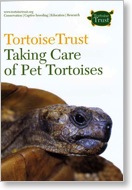by Nadine Highfield
We have already had several weeks of very warm summer weather this year, and though a dry sunny day is normally welcomed by tortoise and turtle keepers, higher temperatures can also present overheating dangers. We all know about the danger of leaving dogs in hot cars - but we often fail to realise that similar dangers face tortoises in captivity.

Preventing overheating in greenhouses:
Greenhouses need adequate ventilation when being used for tortoises in warm weather. Test the interior temperatures in different conditions to make sure your tortoises are safe with the ventilation provided.
If keeping tortoises in a green house overnight, open up the greenhouse as soon as the sun comes up and give the tortoises access to their outdoor area. The interior temperature in greenhouses can rise to dangerous levels very quickly - so quickly, in fact, that a tortoise may not have the time to react and reach the safety of a shelter, even if one is provided.
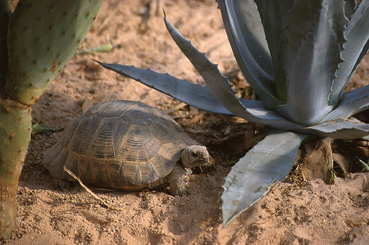
Provide shady areas in the greenhouse where a tortoise can retreat. Areas with vegetation and hides will allow a tortoise easy access to shade and shelter if the temperature rises.
NEVER keep tortoises on tabletop units in a greenhouse. Any units not in contact with the ground will reach critically high temperatures very quickly, and provide no means of shelter or escape. It is much safer to have tortoises at ground level where they have substrate to burrow into and can escape the heat.
How to Prevent Overheating
Like many other reptiles, the body temperature of a tortoise is determined not only by the heat of the sun, but is also affected by the temperature of the surface it is in contact with. A tortoise will bask to raise its body temperature, but when the temperature begins to rise above that which it prefers, the tortoise will begin to search for options to keep from overheating.
In the wild, a tortoise will escape from excessive heat by finding a shady spot, burying down or by using scrapes and burrows. The precise way they choose to shelter will depend on their habitat and on the severity and duration of heat. Tortoises (even those of the same species), may also have different preferences, so tortoises kept in captivity should be given various options in their outdoor areas.
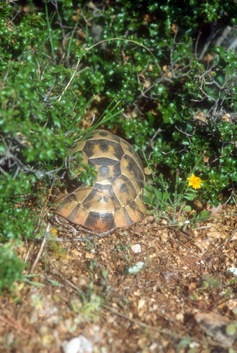
Scrapes and burrows are commonly used by arid species, and help them to avoid extreme temperature fluctuations and retain body fluids during periods of excessive heat. If you live in the UK, or any climate that has more rain and humidity than your tortoise would experience in the wild, you must ensure that the tortoise area has good drainage and dries quickly after a rain. A tortoise cannot create a proper scrape or burrow in wet earth, and sitting on or burying down in wet substrate are a common cause of shell infections. If you have a Mediterranean tortoise or other arid species, the first step is to provide an area with dry and sandy substrate, sloped areas, and good places to burrow in or under.
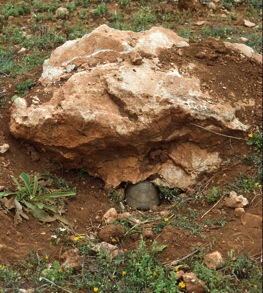
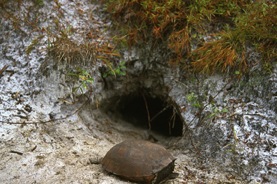
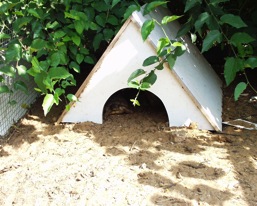
Protecting small tortoises from overheating.
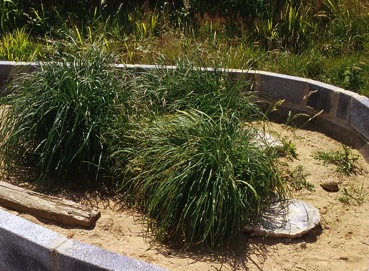
If you are keeping juveniles in trays and tortoise tables, never place them in direct sunlight as critical overheating can occur very quickly - even if they are in contact with the ground. It is much safer to provide them with a separate, secure outdoor pen with natural substrate and adequate anti-predator protection. The increased air circulation outdoors also helps to provide additional cooling.
Tortoises or turtles kept in vivariums are also in extreme danger if these units are exposed to direct sunlight. Tortoises can quickly overheat indoors if exposed to strong sunlight through a window or conservatory ceiling.
Sick, blind, weak or injured tortoises should never be placed in direct sunlight in hot weather as they may not be able to move to a cooler spot. These tortoises can reach critical temperatures very quickly and can die as a result.
Protecting Aquatic Turtles

In the wild, aquatic turtles live in ponds, steams and other bodies of water that have adequate depth to prevent overheating. If a pond becomes too shallow in summer, certain species may bury down into the mud until the rains come. Others, like sliders, will migrate to a deeper pond. But, all turtles must be given options to escape from excessive heat.
To protect turtles from overheating you need to ensure that their water remains in a suitable temperature range, and with a temperature gradient that allows them to thermoregulate.
Have an adequate depth of water in the pond. Natural ponds have a depth and volume of water that keeps the water temperature more stable, and provides a temperature gradient. Shallow water and small ponds will overheat much more quickly.
Insulate the outside of the pond. In-ground ponds are less likely to overheat because they have the moderating affect of the cooler earth under them. Above ground ponds are more likely to overheat, so they need to be insulated by surrounding them with sand bags and enclosing them with a wall or decking boards.
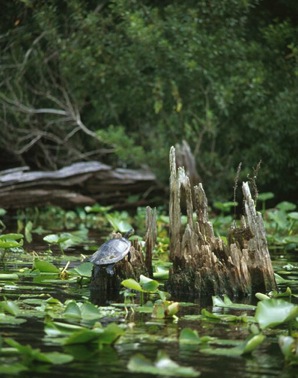
Provide access to sun and shade. In the wild, turtles will move from one basking spot to another as they follow the sun during the day. When designing a turtle pond look at where the sun falls and ensure that one part of the pond is always in shade when the sun is overhead. This will allow the turtle to bask when it needs to raise its body temperature, and also give it a place to retreat to if certain areas become too warm. Adequate shade will also provide a needed temperature gradient and prevent the overall temperature of the pond from becoming too high.
Tortoises and turtles need shade and shelter to protect them from extreme temperatures. By providing them with the same protection from the heat and the sun that they would have in the wild, you can ensure that they can safely enjoy the summer.





